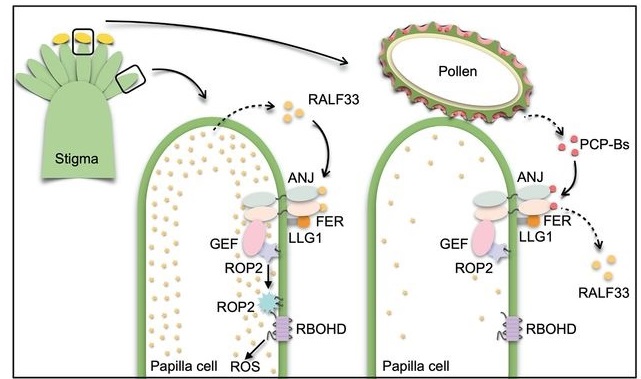
Pollen PCP-B peptides unlock a stigma peptide–receptor kinase gating mechanism for pollination (Science)
Plant Science Research WeeklyIt’s spring where I live and the air and my eyes are filled with pollen. The lucky few pollen grains that land on the stigmatic surface of a flower might germinate and deliver the sperm to the ovule, but there are many checkpoints even after their safe landing. Here, Liu et al. uncover one of the earliest…
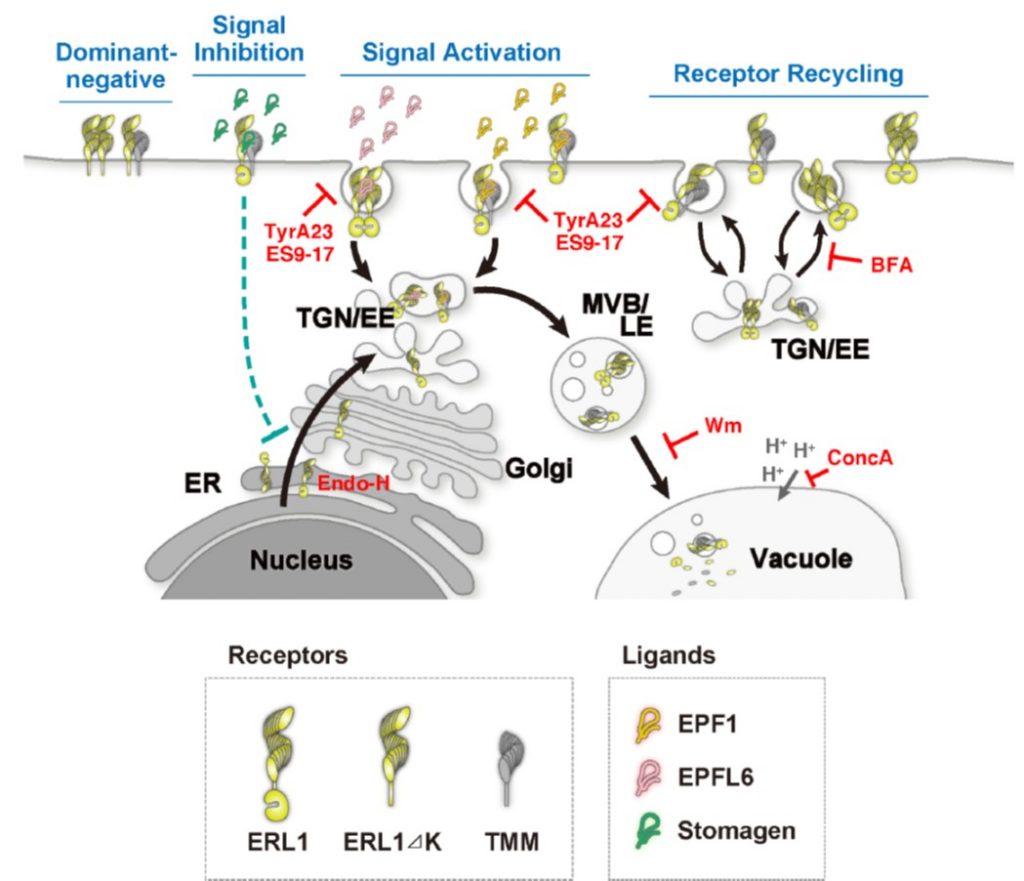
The manifold actions of signaling peptides on subcellular dynamics of a receptor specify stomatal cell fate (eLife)
Plant Science Research WeeklyStomatal development requires cell-to-cell communication and follows one cell spacing, with a minimum of one cell space between two stomata. Key to this communication are the ERECTA and ERECTA LIKE (ERL) Leucine-Rich Repeat domain-Receptor Like kinases (LRR-RLKs) and their ligands, the EPIDERMAL PATTERNING…
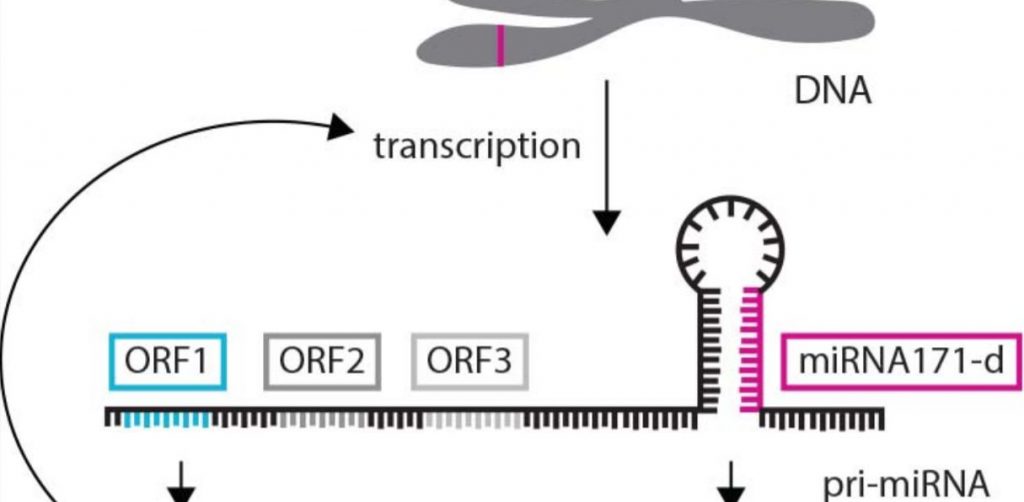
Small but powerful: miRNA-derived peptides promote grape adventitious root formation
Blog, Plant Physiology, Plant Physiology: News and Views, ResearchMagdalena Julkowska, King Abdullah University of Science and Technology
[email protected]
ORCID: 0000-0002-4259-8296
Although plant genomes typically contain hundreds of miRNA encoding genes, we know little about how miRNA expression is regulated (Wang et al., 2019). The expression…
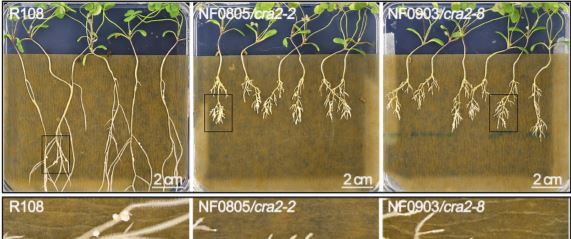
Peptide-Receptor Signaling Pumps the Brakes on Auxin Biosynthesis and Ethylene Signaling to Harmonize Root Growth and Nodulation
Blog, Research, The Plant Cell, The Plant Cell: In BriefNitrogen (N) is the most abundant element in Earth’s atmosphere. However, plants must capture this essential element from soil through their roots. To do this, legume roots forge symbioses with rhizobia to initiate nodule development. Root nodules provide rhizobia an environment suitable for converting…

MtSSPdb—a new data base for the small secreted peptide research community
Plant Physiology, Plant Physiology: News and Views, ResearchEva Hellmann, The Sainsbury Laboratory, University of Cambridge, CB2 1LR Cambridge, United Kingdom, https://orcid.org/0000-0002-4591-2973
[email protected]
Small secreted peptides (SSPs) are short peptides that function as messengers and regulate a variety of processes in plants…
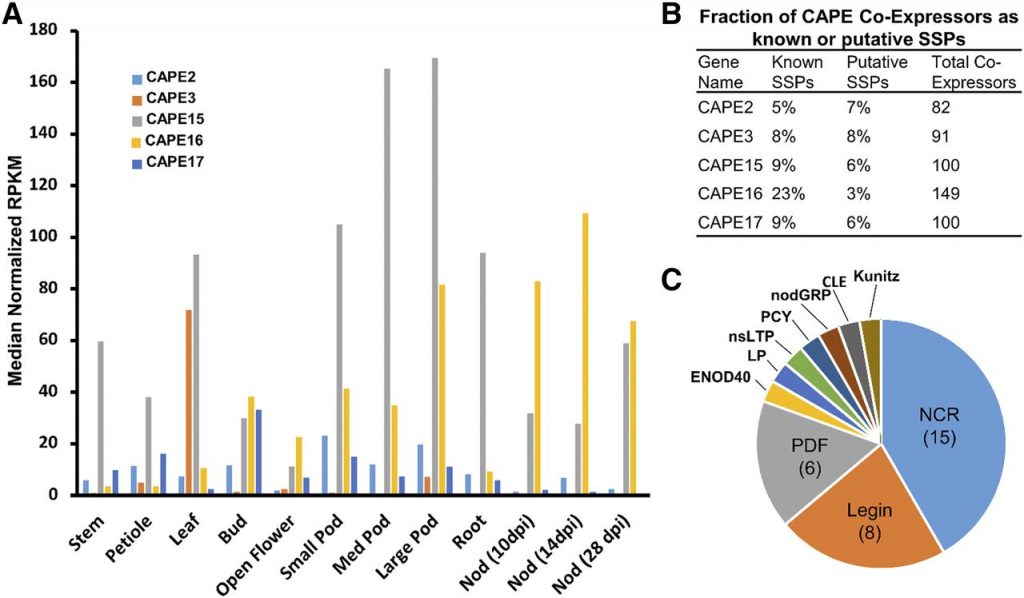
Small Secreted Peptides of a Model Legume: a Database
Plant Physiology, Plant Physiology: On The InsidePlant small secreted peptides (SSPs) have emerged as an important class of regulatory molecules involved in plant growth, development, plant-microbe interactions, and stress tolerance. SSPs are typically encoded within preproteins of 100–250 amino acids, that are subsequently processed into shorter…
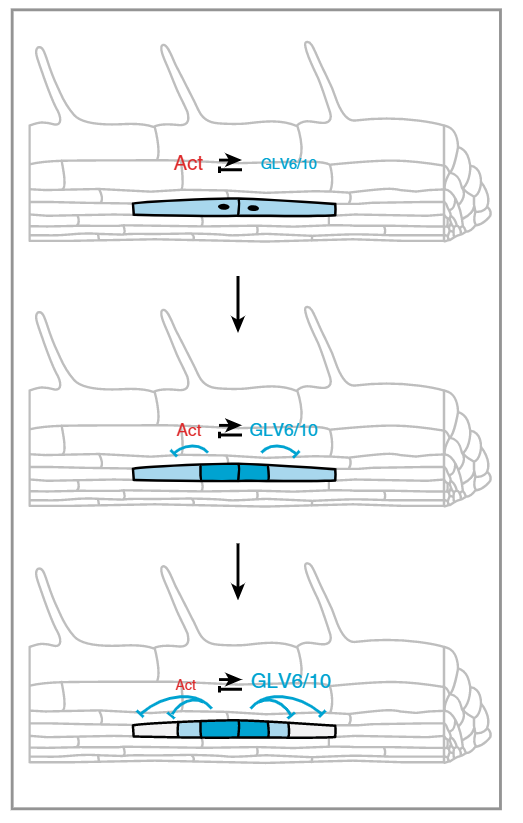
GOLVEN peptide signaling through RGI receptors and MPK6 restricts asymmetric cell division during root initiation (Nature Plants)
Plant Science Research WeeklyLateral root starts development starts with an asymmetric cell division in the founder cell. In this study, Fernandez et al. explored the role of peptide signaling this process. The authors started with the previous finding that GOLVEN peptides are involved in lateral root initiation, as overexpression…
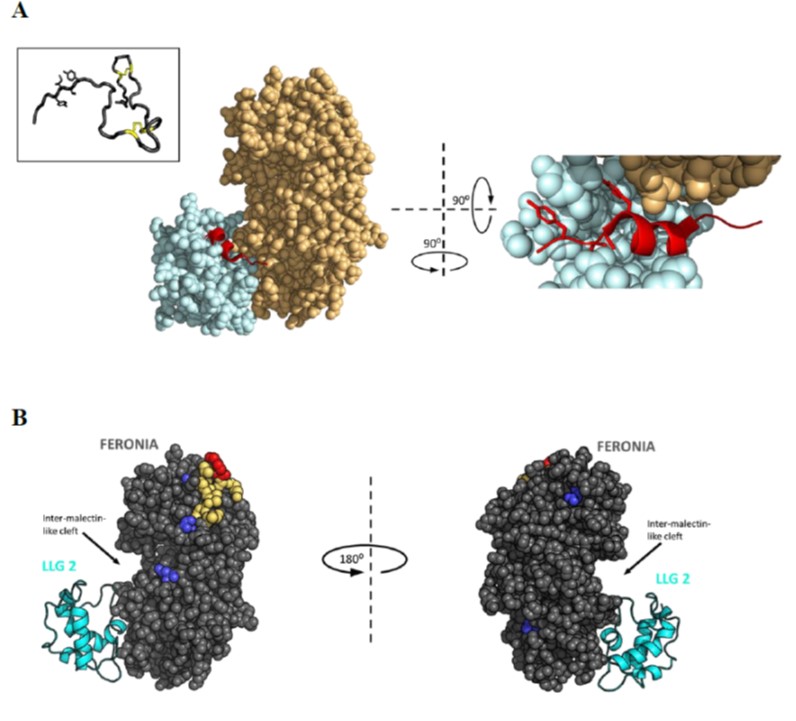
Update: Twenty years of progress in physiological and biochemical investigation of RALF peptides (Plant Physiol)
Plant Science Research WeeklyRALFs (Rapid Alkalinzation Factors) were one of the first types of signaling peptides identified in plants, and as their name suggests they were shown to induce an increase in the pH (i.e., alkalinization) of culture medium, through inducing phosphorylation of a plasma-membrane proton pump. There are…

Review: The role of peptides cleaved from protein precursors in eliciting plant stress reactions (New Phytol)
Plant Science Research WeeklyAlthough the first signaling peptide identified in plants, systemin, is involved in stress responses, developmentally important peptide signals have largely occupied the limelight. This Tansley Review by Chen et al. summarizes recent insights into peptides with a role in stress responses: wounding, pathogen…

